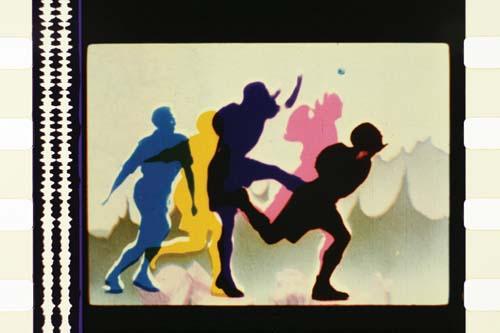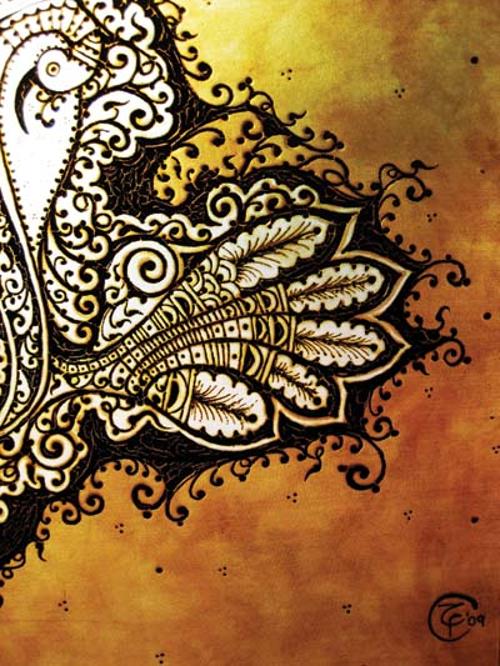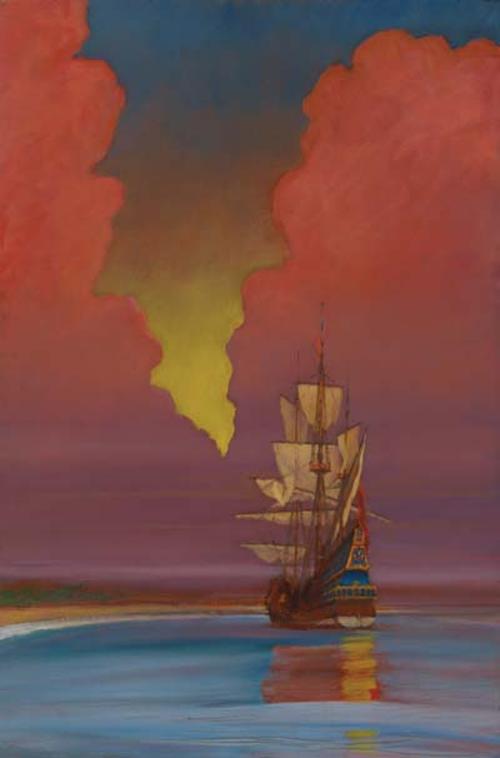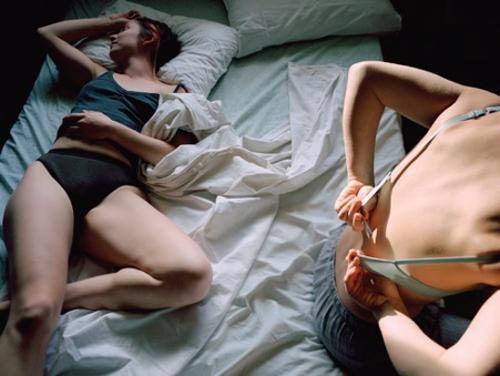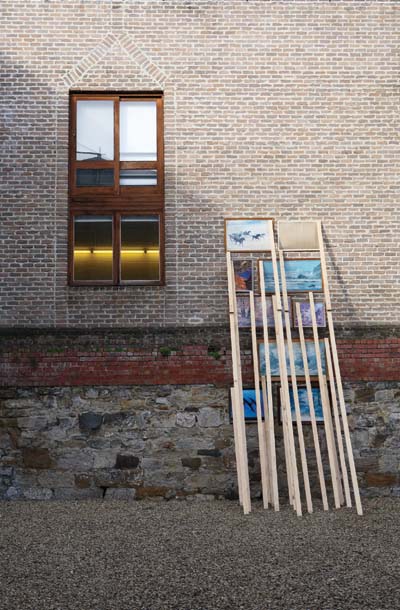
All artworks are site specific but not just because they summon you to a particular location. Art, however materialist, isn't concerned with geography, archaeology or even history as such. Its location, after all, often remains the blind spot in relation to it. The formal cues that are encountered in an artwork, although undoubtedly of their time and place, are mechanisms through which a site is disclosed and obscured in very particular ways.
The two works Bec Stevens has constructed for the Kelly’s Garden Curated Projects Series 1 at the Salamanca Arts Centre, create a structural dialogue with different aspects of this outdoor exhibition space, which, given Steven’s architectural background and the curatorial experience of Sean Kelly makes for a compelling use of this space. 'Extension' uses scaffolding to add a flight of stairs to the existing fire escape of an adjoining building. 'On the way out' comprises three clusters of secondhand, kitsch, framed images propped against the perimeter walls of the space using lengths of framing pine (reminiscent of Richard Serra’s propped sculptures of the late 1960s).
However, the poised suspension of gravity is probably where the similarity with Serra ends as the choice of materials that Stevens employs shifts us into very different aesthetic territory. Her work is often sited in, or intervenes with, the natural environment and is inflected with a bittersweet irony in the face of the silent force, the indifferent and unimaginable otherness, of a universe of which we are an unwitting part.
The suspended images used in 'On the way out' of animals and natural scenes that might be regarded as attempts to domesticate the potential threat and fear of nature, were already 'on the way out’. Discarded from their lounge room environments and deposited in ‘junk’ shops - resaleable only as the frames that circumscribe the pictures – it’s the image that had faded to a blind spot. Now, in Kelly’s Garden, temporarily resurrected, they are doubly ‘on the way out’ as we watch them discolour, crumple and disintegrate in this particularly inclement Hobart winter weather.
With these images neatly arranged to echo the window frames of the surrounding office space Stevens reiterates an inside/outside, culture/nature equation that, in fact, pervades her inspired use of the entire space. From the office windows you look out onto a garden that isn’t a garden (it is, in fact, a gravelled courtyard) observing those looking into nature (which of course isn’t nature), who look as if they’re looking at the outside wall, that’s become an inside gallery wall for images, that can’t be seen from the offices – art lovers observed in their natural habitat. Is there no escape from spectacle?
In turning away from the nature-porn at one end of the ‘garden’, feeling a little bit self-conscious, your eyes ascend the existing fire escape (which you normally ignore) and realise that 'Extension' could enable the flight to freedom you were looking for. The scaffolded addition to the stairway leads up to nowhere and invites an Yves Klein-like response to attempt ‘space travel’.
In 'On the way out', the supporting pine lengths are reminiscent of the portable easel used by the plein-air painter to hold the blank support that will enable a spontaneous response to the capriciousness of the natural environment. 'Extension' inverts what would normally be used and reused as an external frame for architectural forms, temporarily, into the form itself. A fragile equilibrium pervades these works, they evoke, as Sean Kelly writes, ‘...the toughness of the survivor and the fragility of a delicate ‘micro’ ecosystem’.
Towards the end of his short life Yves Klein proposed the concept of ‘air architecture’ in which sophisticated technologies could work symbiotically with nature in such a way that walls and ceilings would no longer be required. He envisaged solar mirrors, artificial gulf streams and the transferring of warm air from one country to another. Evidently he even demonstrated that an air roof was possible in 1961. Considering the current cataclysmic predictions about the state of our environment such ideas begin to gain credence or at least increase the desire for such powerful intervention.
Both of Steven’s works are transitional props, allowing for short-lived openings in which to radically rethink our relationship with the natural world and each other. Perhaps, in the words of Daniel Herman writing in 2004 on Klein’s air architecture: "It’s time to break out the solar mirrors. Let’s redirect the winds. Let’s heat the rivers. Let’s leap into the void."
More articles by Philip Watkins


